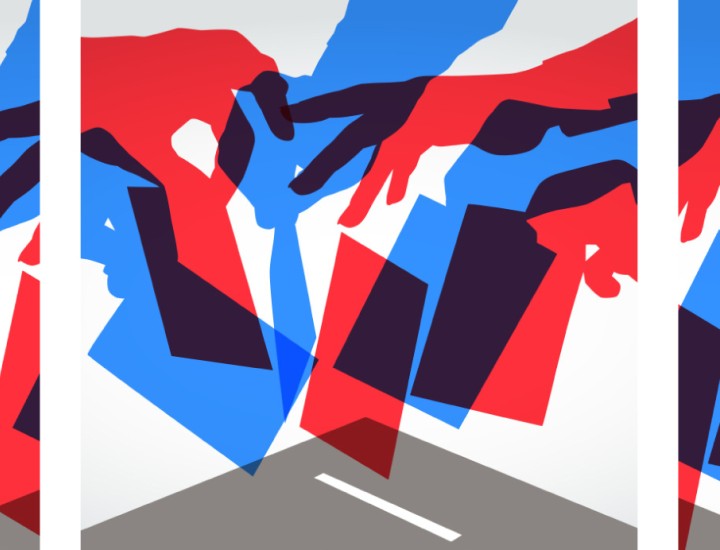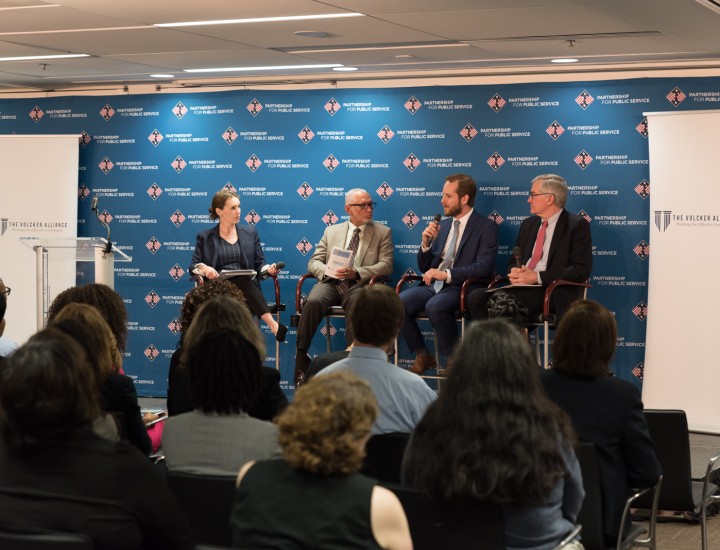Don’t Look to Trump to Overhaul the Bureaucracy

This blog was originally published by Government Executive.
Federal employees who are worried about the future should stop watching President Trump and look up Pennsylvania Avenue, where the real tsunami of civil service reform will likely originate. Trump can order as many hiring and pay freezes as he wishes, but only Congress can change the laws governing civil service hiring, pay, benefits and discipline. Trump’s exemption-laden freeze is mere bluster compared to what the House Oversight and Government Reform Committee has already started to design.
Committee chairman Jason Chaffetz, R-Utah, started working on comprehensive reform long before Trump began his campaign. He has introduced a resolution backing the idea of moving certain federal operations out of Washington, supports a much more stringent hiring freeze that would fill only one in three federal job vacancies, and wants a faster firing process and higher health care premiums. At the same time, he supports higher pay for some federal jobs.
Chaffetz also knows that most federal employees share his concerns about the performance of the civil service. According to the government’s most recent employee survey, less than half of federal workers believe their units are able to recruit people with the right skills, effectively link pay and promotions to performance, deal appropriately with poor performers, and reward creativity and innovation. Many employees are proud of the work they do and believe their organizations are accomplishing their missions, but less than half say creativity and innovation are rewarded within their work units.
Chaffetz must do more than update a few civil service rules and drop his committee’s pointless investigation of Hillary Clinton if he wants to generate the kind of bipartisan civil service reform effort that’s necessary. He also must accept four realities about the current system.
First, Chaffetz must reject Trump’s notion that the federal workforce has grown dramatically in the past several decades. The number of full-time-equivalent federal employees has been remarkably stable at around 2 million since Congress imposed a ceiling on total employment in 1951. The ceiling was removed in 1978, but presidents still hew close to the mark. Federal employment was 2.1 million when the cap took effect in 1952 and 2.1 million when Trump took the oath of office.
Trump’s press secretary was correct when he said that the number of federal employees jumped from 1.7 million under President Clinton to 2.137 million under Obama. But he was guilty of plotting the best curve to make his case, then cherry-picking the data. The total number of federal workers actually rose by almost 250,000 under President George W. Bush to just below 2 million as hiring surged during the war on terrorism, and rose by 160,000 under Obama as he worked to restart the economy and repair under-staffed agencies such as the Veterans Affairs Department.
Moreover, three-quarters of the cuts that took effect during the Clinton administration came from the Defense Department’s post-Cold War downsizing. Federal full-time-equivalent employment was just over 2.1 million when Ronald Reagan left office in 1989 and just under 2 million when George H.W. Bush left office in 1993.
Second, Chaffetz must assure that the government’s vast number of contract and grant employees are doing the right jobs at the right price. According to studies I have conducted, the estimated number of contract and grant employees hit 5.2 million in 2015. The total has moved up and down with wars and economic crises, but Chaffetz cannot ignore the fact that the government-industrial complex now does more than twice as much work as federal employees. The sheer size of the contractor and grantee workforce raises the same concerns about “unwarranted influence, sought or unsought” that led President Eisenhower to warn the nation about the associated threats to democratic processes in his 1961 farewell address.
Third, Chaffetz must help the federal government recruit more millennials to its ranks. Much as they say they want to make a difference for their country, millennials can hardly be expected to line up for jobs in departments and agencies on the chopping block. The Trump freeze is almost guaranteed to increase the average age of the federal workforce, as fewer millennials enter and older employees stay. If Congress adopts an even stricter freeze on federal recruitment, the federal workforce could become the oldest in history.
Fourth, Chaffetz should investigate the inefficiencies created by the federal government’s bloated senior hierarchy. According to my analysis of decades of federal phonebooks, there have never been more layers of leaders at the top of the bureaucracy than there are today. Nor have there ever been more leaders per layer. President Kennedy appointed 451 political and career executives to fill 17 layers in 1961. Trump has inherited 3,250 billets filling 63 layers.
As the number of associate assistant deputy secretaries, assistant associate administrators, associate assistant deputy administrators, and associate deputy assistant secretaries has grown, so has the near-paralysis of the administrative process. Add in the 250 chiefs of staff who now roam the highest levels of government, and it is no surprise that decisions are the product of a never-ending game of “telephone,” in which information is distorted on the way up the chain of command and guidance is lost on the way back down.
Chaffetz cannot address these challenges if he eschews bipartisan action. Members of both parties know that it is time to fix the system and both appear ready to bargain, but Chaffetz must show them that the problems go well beyond the simple mechanics of hiring, firing, paying and promoting. If he acknowledges that the federal workforce is not an out-of-control behemoth, Chaffetz can find ample opportunity to reengineer the civil service system, regulate the government-industrial complex, invite millennials to serve and flatten the government’s hierarchy. If he does so, he can bring the civil service into the 21st century—better 20 years late than never.


